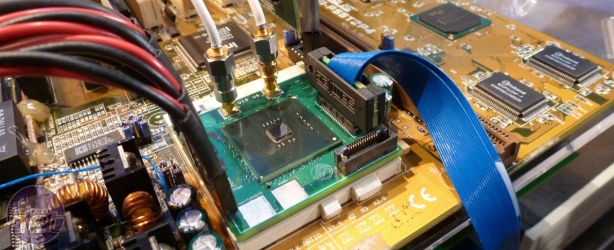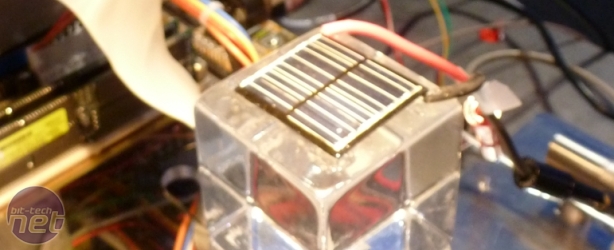
What's Claremont For?
The interpretation that Claremont was an example of a new method of performance and power draw throttling wasn’t supported by Intel, however. No mention was made of SpeedStep, and the codename given to the CPU suggests that Intel sees Claremont as a product in its own right. But if that’s the case, why bother modding an old CPU that you haven’t even got a motherboard for? Why not use a Sandy Bridge CPU and a custom LGA1155 motherboard? The Intel engineer even said that, had Intel used a current generation processor, the power draw would have been 6-8 times lower.
However, earlier in the presentation, Justin Rattner, CTO and director of Intel Labs (among other titles), was talking about the challenge of delivering multi-core (32+) CPUs at a reasonable power budget. The Socket 7 Pentium is a basic CPU core, which simplifies the message of the demo: one CPU core consuming less than 10mW of power.
There are no single-core Sandy Bridge processors that don’t have integrated graphics units, so using an LGA1155 processor might have confused the desired message. The basic design of the Pentium might also have helped the Intel engineers break into the processor package – we saw some weird adaptors and inputs to get the power from the solar cell into the processor package (it was only the CPU that was powered by the solar cell, not the whole system).
We’re still a little confused about the exact nature of Claremont. The codename seems to suggest that it’s a single-core CPU that can perform some tasks at a power draw of less than 10mW, while delivering decent amounts of performance when desired (unlike an Atom CPU, which would always be slow). If Claremont is destined to become a product, Intel is also likely to use a new processor package (probably an FBA one for an embedded platform) rather than resurrecting Socket 7.

The basic packaging of the Socket 7 CPU might have been one reason for choosing it for the demo -
those additional inputs might have been tricky to apply to a modern CPU package
However, Claremont is also described as a concept CPU, and so could be the basis of a 64-core CPU with a power draw of around 50W. This CPU would comprise relatively slow cores for that TDP, but would have the ability to boost some or all cores to ‘nominal’ frequencies and votages should the workload demand.
Then again, Claremont could just be a concept to prove that Intel's Near Threshold Voltage technology works, and that Intel has realised that it doesn’t need to supply quite as much voltage to its CPU as it previously thought. Or that we could see a SpeedStep-like technology on future CPUs where the frequency and power draw remain low even when it’s asked to perform some tasks.
We’ll attempt to follow up with more information, but we invite you to leave your thoughts on what you think about Claremont, and what you’d like to see as a result of the solar-powered CPU project. To the forum!

MSI MPG Velox 100R Chassis Review
October 14 2021 | 15:04









Want to comment? Please log in.